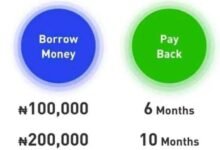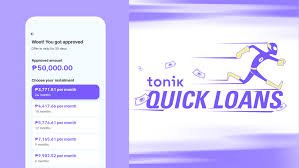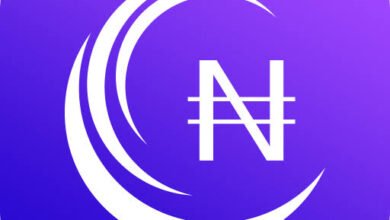20 Student Loan Questions to Ask Yourself Before Borrowing
Nobody likes starting their adult life with crushing student loan debt. Unfortunately, student loans have become a necessary evil. According to the Institute for College Access & Success’ Project on Student Debt, 62% of 2019’s college grads had significant student loan debt upon graduation, with an average of $28,950 in outstanding loans.
If you’re forced to take out a loan for your college education, the least you can do is choose your loan wisely to minimize costs. To do that, you need to go on a fact-finding mission.
But to collect the information you need to pick the best student loan for you, you have to ask yourself the right questions.
Student Loan Questions to Ask Yourself Before Borrowing
Before grilling student loan providers, there are a few key questions you need to ask yourself. Your answers will serve as a foundation for the rest of your research.
1. Should I Get a Private or Federal Loan?
Federal student loans come from the federal government, while private student loans come from banks, credit unions, and states.
Making the choice between federal and private loans is simple: Use all the federal loans you’re eligible for before thinking about private loans. That’s because federal loans typically come with:
- Lower interest rates
- The option to consolidate
- Various repayment plan options
- Extra protections like delayed payments and loan forgiveness
You can find information about federal student loans at StudentAid.gov.
That said, there are limits to how much you can take out in federal loans, and the aid package you qualify for depends on your financial need. These limits are rarely enough to cover the cost of private college tuition, which averaged an astounding $35,087 for the 2020 – 2021 school year, according to 2020 – 2021 school year data gathered by U.S. News & World Report.
Private loans also often make more sense if your co-signer has an exceptional credit score and qualifies for a private loan with a lower interest rate than a federal loan.
To help you decide which loan options are best for you, read our article on private versus federal student loans. If you’ve already depleted your federal student loan options and still need more money, check out our list of the best private student loan companies.
2. Is Loan Forgiveness a Serious Option?
The government offers student loan forgiveness to loan borrowers who meet specific requirements. The two most popular types of forgiveness are the Public Service Loan Forgiveness (PSLF) Program and the Teacher Loan Forgiveness Program.
PSLF is for employees of the government and not-for-profit organizations. The program forgives the remaining balance of all direct loans after you make 120 qualifying monthly payments.
The Teacher Loan Forgiveness Program forgives $17,500 of direct and Federal Family Education Loans (FFEL) after you teach full-time in a low-income elementary school for five consecutive years.
If you plan to work in any of these sectors, familiarize yourself with all the specific requirements while planning your financial aid strategy.
3. How Much Money Do I Need to Borrow?
As a young high school or college student, it’s tempting to borrow more than you need when offered a check for thousands of dollars. That’s a mistake.
Rather than grabbing the maximum amount the loan servicer offers, take time to calculate how much you need. That includes tuition and standard room and board as well as the cost of educational and living expenses like books, university fees, supplies, food, and transportation.
Since expenses vary significantly between universities, most colleges have their own cost calculator. Use the United States Department of Education’s Net Price Calculator Center to look up the calculator for your university.
4. Can I Reduce the Amount I Need to Borrow?
Before taking out any giant loans, look for ways to minimize the amount you need to borrow.
You can minimize your loans by:
- Living at home instead of on-campus
- Working a part-time job while studying
- Finding scholarships and grants to fund your studies
- Attending community college for your first two years of higher education
These require making sacrifices, but your future self will thank you for it.
5. Will I Work My Way Through School?
One way to minimize your debt is to work while you’re in school. But if you aren’t careful, your earnings can affect the federal aid you’re eligible for.
One factor influencing your need-based aid — including grants and subsidized loans — is your expected family contribution (EFC). If you’re a dependent, EFC includes both your and your parents’ income. That means if you earn too much, you qualify for less need-based aid.
In 2021, the EFC income limits are $6,970 for dependents and $27,000 for independents (including spousal income). If you earn less than those limits, your job won’t affect your need-based aid.
You don’t need to include income from federal work-study programs in your FAFSA (Free Application for Federal Student Aid), and it doesn’t affect your EFC.
Lastly, if you need to enroll in fewer classes due to work obligations, don’t drop below half time. If you do, you’re no longer eligible for federal loans and must start repaying any loans you currently have.
6. Do I Need My Parents’ Help?
If your FAFSA aid package doesn’t cover all your expenses, you have to find a way to fill the gap.
One way to do so is with a parent PLUS loan. Through June 31, 2021, PLUS loans have a fixed interest rate of 5.30%, and these rates reset on July 1 every year.
Parent PLUS loans come with many of the same benefits as other types of federal student loans, including various repayment plans and the ability to request a deferment while you’re in school.
That said, they also come with a hefty origination fee of 4.228%.
If your parents have excellent credit, see if a private lender offers you a cheaper rate with no origination fee.
Essential Questions to Ask When Getting a Student Loan
Now that you know exactly how much you need to borrow, it’s time to gather data from potential private lenders to determine which is best for you.
You can use this table below to organize all the data you uncover.
| [Lender Name 1] | [Lender Name 2] | |
| Contact Name | ||
| Phone | ||
| Interest Rate | ||
| Fixed or Variable? | ||
| When Do Rates Change? | ||
| Multiyear Loan Available? | ||
| Fees | ||
| Loan Term Options | ||
| Monthly Payment | ||
| Discounts Offered | ||
| Loan Limits | ||
| Missed Payment Policy | ||
| Alternative Repayment Plans | ||
| Forbearance/Deferment Policies | ||
| Grace Period | ||
| Other Notes |
7. What Interest Rate Am I Eligible For?
Federal loan interest rates are fixed and the same for everyone. But private lenders determine your interest rate based on your (or your co-signer’s) creditworthiness.
While discussing rates, you also need to know:
- Is It a Fixed or Variable Rate? A variable interest rate means it can change over time. Variable rates often start lower than fixed rates but can fluctuate over time. It’s a gamble. If rates rise, so does the cost of your loan.
- Does the Rate Change After Graduation? Sometimes, interest rates increase after you graduate. Each private lender has its own terms. If you don’t like them, you can either try to negotiate or find another lender.
When you apply for a loan, the lender makes a hard inquiry on your credit report, temporarily lowering your score. To avoid multiple hard inquiries, use private loan-comparison tools like Credible to find the best rates without affecting your credit score.
After narrowing down your list of top lenders, complete all your loan applications within a 45-day window. By doing so, all the inquiries are bundled together, so your credit score only takes one hit.
Also, avoid opening a credit card before applying for student loans. The hard inquiry can lower your score for up to a year and affect the interest rates you qualify for.
To learn more about how loan applications affect your credit score, see our article on hard versus soft credit inquiries.
8. How Often Will I Have to Apply for New Loans?
You must complete the FAFSA for each year you need a federal student loan.
Private loans usually only cover a semester’s or year’s worth of expenses. That means you have to shop around and apply for loans multiple times. It also means you have multiple individual loans to pay off after you graduate (though refinancing or consolidation are options).
But some private lenders — such as Discover and Citizens Bank — offer multiyear student loans. These loans allow you to fund your entire education with one loan application. That means less time spent on paperwork, fewer bills to worry about, and fewer dings to your credit score.
9. What Are the Fees?
Before signing any contracts, it’s crucial you understand the fees associated with your loan. The primary fee to be concerned about is the origination fee.
Federal loans carry an origination fee of 1.057% for direct subsidized and unsubsidized loans and 4.228% for direct PLUS loans. The loan servicer calculates this fee based on your total loan amount and deducts it before you receive your balance.
For example, if you take out a $13,000 direct PLUS loan, the loan servicer immediately deducts the $550 origination fee, leaving you with $12,450 to spend. To avoid running out of money, you must include this fee in your calculations when determining how much financial aid to accept.
Most private loans don’t have these types of fees, but some do, so it’s wise to ask upfront.
10. What Is the Loan Term?
Federal loans come with a standard 10-year repayment term. You can request an alternative payment plan at any time after you begin making payments. Most of these alternative plans stretch out the loan term and lower monthly payments. However, they can also increase the total cost of the loan.
Private loan terms vary from lender to lender and range from five to 25 years. That can significantly affect the total cost of your loan. While a shorter term requires higher monthly payments, you pay less over the life of the loan.
11. What Would My Monthly Payment Be?
Interest rates and loan amounts are important, but in the end, you need to know if you’ll actually be able to afford your monthly payments.
Ask your lender to give it to you in simple terms. For example, if you want to take out a 10-year $15,000 loan with a 7% fixed interest rate, ask them how much your monthly bill will be.
If you’re shopping for student loans online, you can figure out your estimated monthly payments with a student loan calculator like the ones offered by Student Loan Hero or Sallie Mae.
12. How Can I Lower My Monthly Student Loan Payments?
You can lower your monthly payment by extending your loan term, but that results in a more expensive loan.
If you want to lower both your monthly payment and the total cost of the loan, ask your lender if they offer any interest rate discounts.
Some of the most common discounts are:
- Automatic Payment Discounts. Shave 0.25% off your federal direct loans by signing up for autopay. Many private lenders match or exceed this discount. For example, PNC knocks 0.50% off their undergraduate student loan interest rate when you set up automatic payments.
- Loyalty Discounts. Some lenders offer discounts to customers who already have an account with them. For example, Citizens Bank reduces your interest rate by 0.25% if you or your co-signer have an existing account — including student checking accounts.
- On-Time Payment Discounts. Some lenders also offer discounts after a few years of on-time payments.
If you don’t proactively request these discounts, you may miss out on savings.
13. How Do I Receive My Student Loan Disbursements?
If this is your first time using a student loan, the process can feel a bit complicated.
The specific process varies from school to school, so ask your lender and your school’s financial aid office how (and when) you can access your funds.
In most cases, the loan servicer sends the money directly to your school, which applies it to your tuition, room, and board. The school returns any leftover funds to you to use for other approved expenses.
14. How Do I Complete the Loan Application?
For federal loans, you must fill out the FAFSA every year between Oct. 1 and June 30 — the earlier, the better.
There are no deadlines for private loans, but since they can take several weeks to process, don’t wait until the last second. To be safe, start shopping around for quotes a couple of months in advance, then send your formal applications a month before you need the money.
Nowadays, you can apply for most private loans online. If any questions crop up during the application, clear them up with the lender before submitting your application.
15. Are There Any Loan Limits?
Federal student loans have a yearly cap and a total cap. Your limits depend on the type of loan, your dependency status, and your year in school.
Private student loan limits vary by lender but are generally much higher than federal limits. If you need to use a private lender, make sure they offer enough to cover your needs.
Questions to Ask About Student Loan Repayment
Now that you understand the basics of how different student loans work, there are a few additional questions to ask about student loan repayment.
16. What if I Miss a Student Loan Payment?
Federal and private lenders handle missed payments differently.
If you miss a federal student loan payment, you become delinquent and incur a late fee. After 90 days, the loan service reports your missed payments to the credit bureaus, which can tank your credit score. If you still haven’t paid after 270 days (about nine months), you risk defaulting on your student loan, which carries serious consequences.
Private lenders are known to be even less lenient with borrowers. Missed-payment policies vary by lender but may include steeper late fees and reporting to credit bureaus sooner.
To avoid surprises, ask your lender to explain the consequences and ways to prevent them.
17. What if I Can’t Afford My Payments?
If you’re hit with a financial hardship like job loss or medical bills, it can be challenging to keep up with payments.
Federal lenders offer several solutions in these situations, including:
- Income-Driven Repayment Plans. Income-driven repayment plans adjust your monthly payment based on your income, usually by extending the loan term.
- Forbearance. Certain hardships qualify you to postpone payments for a set period, but interest continues to accrue.
- Deferment. Certain hardships qualify you to postpone payments and interest accrual.
Ask your private lender if they provide these types of assistance and how to qualify. Private lenders typically have fewer repayment plans and offer shorter forbearance and deferment periods (if any).
If you can no longer afford your bills, it’s always better to communicate with your lender and work out a solution before missing any payments.
18. How Long Is the Grace Period After Graduation?
A grace period is a period during which you don’t have to make payments after graduating or leaving school. It allows you to find a job and establish yourself before bills come due.
The grace period for federal loans is usually six months but depends on the type of loan. Grace periods for private loans vary by lender and are a critical factor when choosing who to work with.
Some lenders offer six-month grace periods similar to federal loans. Other lenders start charging payments from the date you take out the loan. If that’s the case, you must find a way to afford your payments while studying.
Note that even if there is a grace period, most loans start accruing interest while you’re still in school.
19. Do I Need to Consolidate or Refinance My Loans?
The longer you study, the more loans you collect.
Each year you fill out the FAFSA (Free Application for Federal Student Aid), you’re eligible for new federal student loans. Private loans usually only cover a semester’s or year’s worth of expenses, so you need to apply for new loans repeatedly.
By the time you graduate, you often have a stack of loans on your hands. Multiple loans mean multiple monthly payments to make (and multiple opportunities to forget those payments).
To simplify your finances, you can bundle your loans by consolidating or refinancing.
Consolidation is for federal student loans only. It’s the process of adding your loan balances together, averaging the interest rates, and grouping everything into one, easy-to-manage loan.
You can’t consolidate private loans, so to combine them, you need to refinance. That involves taking out a new loan that pays off all your smaller individual private loans. In addition to simplifying your finances, refinancing also allows you to lock in a lower fixed interest rate.
Refinancing interest rates fluctuate with the Federal Reserve rate, so for the best deal, wait until the Reserve lowers interest rates. That gives you time to build a solid credit history — another rate-determining factor.
20. What Are Repayment Plan Options?
Federal loans offer several different repayment plans, including:
- Standard Repayment Plan: Fixed payments for 10 years
- Graduated Repayment Plan: Payments start low and gradually increase over 10 years
- Extended Repayment Plan: Fixed or graduated payments for up to 25 years
- Pay-as-You-Earn Repayment Plan (PAYE): Payments are 10% of your discretionary income capped at what they’d be on the standard plan and forgiven after 20 years
- Revised Pay-as-You-Earn Repayment Plan (REPAYE): Payments are 10% of your discretionary income, recalculated annually, and forgiven after 20 to 25 years
- Income-Driven Repayment Plan: Payments are 10% to 15% of your discretionary income, recalculated annually, and forgiven after 20 to 25 years
- Income-Contingent Repayment Plan: Payments are the lesser of 20% of your income or the fixed payment amount on a 12-year repayment plan
- Income-Sensitive Repayment Plan: The loan servicer adjusts your payments according to your income so you can pay them in full within 15 years
For more information on any of these repayment options, see StudentAid.gov.
Depending on your career, expenses, and unique personal situation, you may find that one of these alternative plans makes more sense than the standard plan.
Private lenders don’t offer as many options, but you may be able to adjust the loan term.
Final Word
As you can see, a lot goes into researching student loans. Your first step is to submit a FAFSA application to determine your federal aid eligibility.
If federal aid comes up short, you can use tools like Credible to quickly compare private lenders, get your questions answered, and find the best rates.
It may not be the most exciting task in the world — especially when you’re busy trying to enjoy summer vacation. But by putting in a little extra effort now, you can potentially shave thousands of dollars off your student loan debt.
And that’s something to be excited about.










One Comment